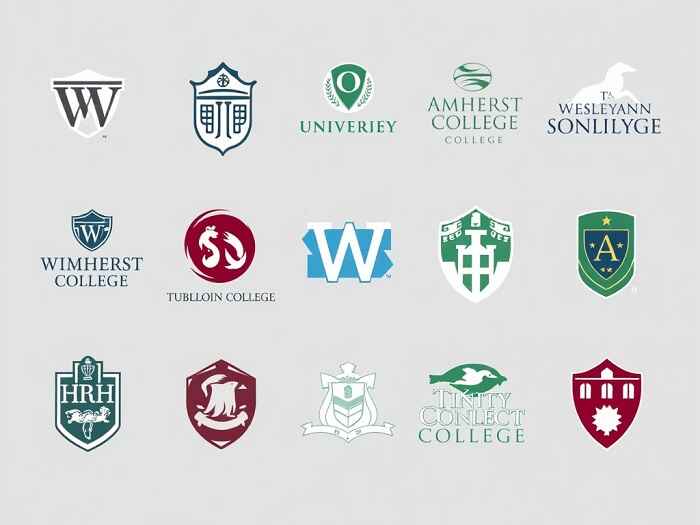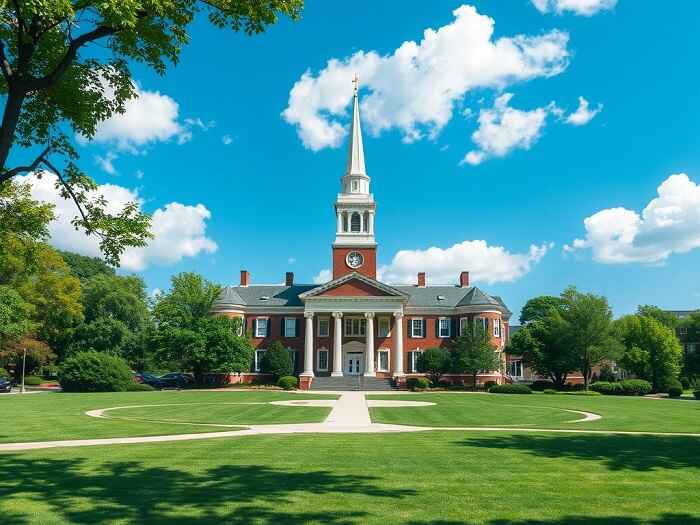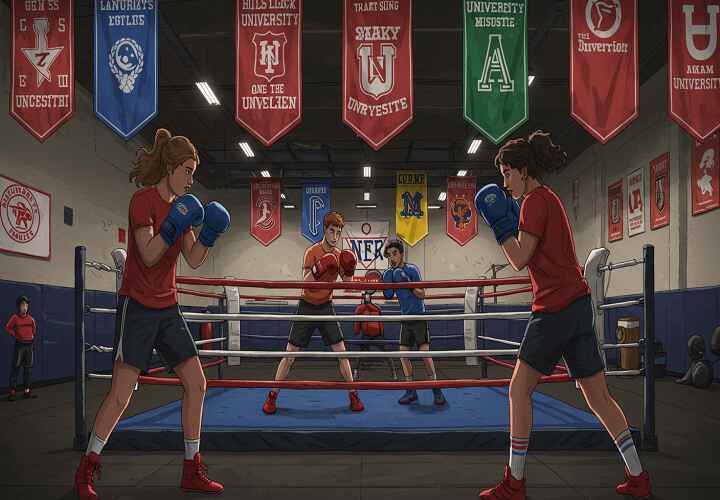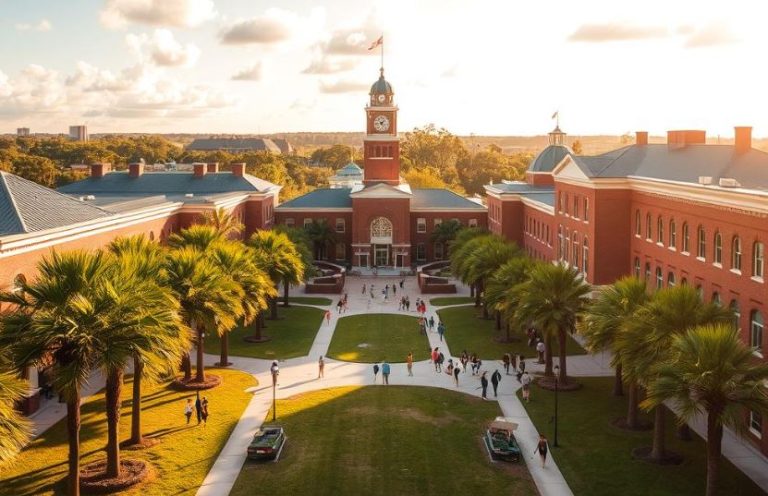NESCAC Schools Rankings: What Makes Them Stand Out
The New England Small College Athletic Conference (NESCAC) is a Division III intercollegiate athletic conference that comprise of 11 academically elite small colleges in the Northeast.
These institutions include- Williams College, Amherst College, Bowdoin College, Middlebury College, Tufts University, Hamilton College, Wesleyan University, Colby College, Bates College, Trinity College, and Connecticut College. They are renowned for their small class sizes, close-knit communities, and emphasis on undergraduate education.
If you are searching for higher education institutions in the Northeastern United States with academic rigor, high graduation and employment rates, then NESCAC schools should be on your radar.
The NESCAC schools are known for their vibrant student life, and athletic excellence, NESCAC institutions are often referred to as the “Ivy League of liberal arts colleges.” But what exactly sets these schools apart, and why do they consistently rank so highly in college rankings? These and many are what I will be revealing in this post. Let’s dive in.
Factors We Used in the Rankings of the NESCAC Schools
1. Academic Reputation and Performance
One of the primary reasons NESCAC institutions consistently rank high in college rankings is their unparalleled academic reputation. Schools like Williams College and Amherst College occupy the top spots in national liberal arts college rankings every year. This is largely due to their commitment to academic rigor, innovative teaching methods, and the intellectual caliber of their students.
NESCAC schools prioritize small class sizes and personalized attention, fostering close relationships between students and professors. The focus on undergraduate education ensures that students receive a hands-on, immersive learning experience. Additionally, many of these colleges boast highly ranked programs in fields such as economics, political science, and the humanities, further enhancing their academic reputation.

2. Selectivity and Incoming Student Stats
When evaluating NESCAC schools rankings, selectivity plays a significant role. These institutions have some of the lowest acceptance rates in the country, with Williams College and Amherst College admitting fewer than 10% of applicants. Their rigorous admissions processes ensure that incoming students are among the brightest and most talented in the nation.
The middle 50% SAT and ACT ranges for NESCAC institutions reflect the academic excellence of their student bodies. For example, Bowdoin College boasts a middle 50% SAT range of 1,460–1,560 and an ACT range of 33–35. These high incoming student stats are a testament to the exceptional quality of education offered at these schools.
3. Graduation Rates and Student Outcomes
Graduation rates are another key metric that contributes to NESCAC schools’ rankings. Institutions like Williams, Amherst, and Bowdoin consistently achieve graduation rates above 90%, underscoring their ability to support students through their academic journeys.
In addition to high graduation rates, NESCAC colleges are known for producing successful alumni. Graduates from these schools often go on to attend top graduate programs or secure prestigious job opportunities. Their strong networks, robust career services, and reputation for academic excellence make NESCAC alumni highly sought after in the job market.
4. Endowments and Financial Aid
The financial resources available to NESCAC institutions play a crucial role in their rankings and overall quality. Schools like Williams and Amherst have endowments exceeding $3 billion, allowing them to invest heavily in academic programs, state-of-the-art facilities, and generous financial aid packages.
Endowment per student is an important factor in rankings, as it directly impacts the quality of resources available to students. NESCAC schools use their endowments to attract top faculty, maintain cutting-edge research facilities, and provide robust financial aid. Many of these institutions are need-blind in their admissions processes and meet 100% of demonstrated financial need, making their exceptional education accessible to students from all backgrounds.
5. Athletic Programs and Student Life
While academics are the primary focus, NESCAC schools also excel in athletics and student life. The conference’s Division III athletic programs allow students to compete at a high level while still prioritizing their studies. Sports are an integral part of campus culture, fostering school spirit and a sense of community.
Beyond athletics, NESCAC schools offer vibrant campus communities with diverse extracurricular opportunities. From student-run clubs and organizations to cultural events and volunteer programs, there’s no shortage of ways for students to get involved. This balance of academic excellence and engaging student life is a hallmark of the NESCAC experience.
NESCAC Schools Rankings Lists
1: Williams College
- Location: Williamstown, MA
- Acceptance rate: 8%
- Middle 50% SAT range: 1,480-1,570
- Graduation rate: 95%
Williams College isn’t just the most prestigious school in the NESCAC—it’s also ranked as the top liberal arts college in the country. This isn’t just based on U.S. News rankings; Williams stands out with the highest student academic stats, the largest endowment per student, and the best outcomes for graduates, including top grad school acceptance rates and strong post-graduation salaries.
Amherst College challenges Williams for the top spot every year, but Williams has held onto its number-one position for a long time. If you’re lucky enough to get accepted, it’s hard to turn down the opportunity to attend.
2: Amherst College
- Location: Amherst, MA
- Acceptance rate: 7%
- Middle 50% SAT range: 1,410-1,550
- Graduation rate: 94%
Amherst College is Williams’ biggest rival and ranks as the second-best liberal arts college in the NESCAC—and in the nation. Alongside Williams and Swarthmore (from the Pennsylvania-based Centennial Conference), Amherst is part of the so-called “holy trinity” of liberal arts colleges.
One advantage Amherst has over Williams is its location. While Williams is in a remote rural town, Amherst is in a lively college town just a few miles from the University of Massachusetts—Amherst, the state’s flagship public university.
Amherst students can benefit from this proximity through a consortium that allows them to take classes at UMass and other nearby colleges. However, transportation between campuses can be tricky without a car, and freshmen at Amherst aren’t allowed to have one. Unfortunately, public transit in the area is fairly limited.
3: Bowdoin College
- Location: Brunswick, ME
- Acceptance rate: 9%
- Middle 50% SAT range: 1,460-1,560
- Graduation rate: 95%
Bowdoin College closely competes with Amherst and Williams, boasting a similar graduation rate and slightly lower student academic stats.
Interestingly, Bowdoin has the lowest acceptance rate in the NESCAC, making it the hardest school in the conference to get into. This is likely due to its small student body and growing popularity in recent years.
Some students may apply to Bowdoin as a backup if they don’t get into Williams, Amherst, or Swarthmore. However, with an acceptance rate under 10% and an average ACT score of 34, Bowdoin is far from being a safety school for anyone.

4: Middlebury College
- Location: Middlebury, VT
- Acceptance rate: 13%
- Middle 50% SAT range: 1,410-1,520
- Graduation rate: 93%
Middlebury College, located in rural Vermont, is known for combining intellectual rigor with strong preprofessional programs. It boasts high student academic stats and a graduation rate just slightly below the top three NESCAC schools.
A few years ago, Middlebury faced controversy when a small group of students disrupted and physically confronted political scientist Charles Murray during a campus speech. The incident stemmed from objections to Murray’s right-leaning views and his 1990s book, The Bell Curve, which some claimed promoted racist ideas.
While this event cast a negative light on the school, it’s important to note that only a small number of students were involved, and the college promptly disciplined them. Beyond this isolated incident, Middlebury has a long-standing reputation as a place where open debate and critical thinking thrive.
5: Tufts University
- Location: Medford, MA
- Acceptance rate: 10%
- Middle 50% SAT range: 1,450-1,550
- Graduation rate: 94%
Tufts University stands out in the NESCAC as the only school in the conference that isn’t a traditional liberal arts college. Classified as a National University by U.S. News, Tufts offers both undergraduate and graduate programs and is significantly larger than the other NESCAC schools.
In the past, Tufts was often seen as a top safety school for students aiming for Ivy League colleges like Harvard. It also had a reputation for “Tufts syndrome,” where the school reportedly rejected high-achieving applicants to protect its yield rate (the percentage of admitted students who enroll).
Today, Tufts has shed that reputation. Its incoming students boast top grades and test scores, and with an acceptance rate of just 10%, it’s far from being a safety school for anyone. Tufts now stands as a highly competitive and prestigious institution in its own right.
6: Hamilton College
- Location: Clinton, NY
- Acceptance rate: 12%
- Middle 50% SAT range: 1,420-1,540
- Graduation rate: 92%
Hamilton College is equally competitive in admissions and has similar student statistics to Tufts. It also has a higher endowment per student, though this is partly because Hamilton is much smaller than Tufts and the rest of the NESCAC schools.
Hamilton comes right after Tufts in ranking because it doesn’t have the same level of name recognition or the national (or even regional) prestige that Tufts enjoys. Its remote location also makes it harder to build connections for internships and jobs, whereas Tufts benefits from being close to Boston and accessible by train.
That said, Hamilton is an excellent choice for aspiring writers, with top-notch humanities programs. Students from all majors also achieve incredibly high acceptance rates to law, medical, and other graduate schools, making Hamilton a standout institution in many respects.
7: Wesleyan University
- Location: Middletown, CT
- Acceptance rate: 14%
- Middle 50% SAT range: 1,440-1,550
- Graduation rate: 92%
Wesleyan University is unique in the NESCAC for becoming slightly less selective over the past few years. If this list had been made five years ago, Wesleyan might have ranked higher than Hamilton—and maybe even Tufts. In fact, as of 2024, U.S. News still ranks it above several NESCAC schools that we’ve placed higher on our list.
Wesleyan’s incoming student stats remain strong, but its acceptance rate hasn’t dropped as much as its peers. This is partly because it hasn’t seen the same surge in applications as other NESCAC schools.
There’s no single reason why Wesleyan isn’t currently as “hot” as schools like Bowdoin or Hamilton. It could be its strong left-wing reputation, which appeals to some but might deter more moderate or conservative students. Its “quirky” vibe and lack of a traditional Greek life or party scene might also play a role.
Still, Wesleyan remains one of the most prestigious liberal arts colleges in the country, even if its position in the NESCAC hierarchy has slipped slightly.
8: Colby College
- Location: Waterville, ME
- Acceptance rate: 8%
- Middle 50% SAT range: 1,430-1,540
- Graduation rate: 89%
Colby College, located in Waterville, Maine, is one of the nation’s top liberal arts colleges. Known for its rigorous academics and strong environmental focus, it was the first college to achieve carbon neutrality.
Colby offers a collaborative and close-knit community with small class sizes and an emphasis on global engagement, including a robust study abroad program.
The college boasts a beautiful, rural campus and access to outdoor activities like skiing and hiking. Its graduates enjoy high placement rates in competitive jobs and graduate programs.
9: Bates College
- Location: Lewiston, ME
- Acceptance rate: 14%
- Middle 50% SAT range: 1,310-1,505
- Graduation rate: 92%
I find that Bates College has a similar vibe to Colby, and as of 2024, it ranks slightly higher in U.S. News with a marginally better graduation rate. However, Bates is located in a town that feels a bit more run-down, and its incoming student stats are a little lower. The school also has a much smaller endowment, which is noticeable when comparing the two campuses. Colby’s facilities are more extensive and feel more modern and upscale in comparison.

10: Trinity College
- Location: Hartford, CT
- Acceptance rate: 36%
- Middle 50% SAT range: 1,300-1,470
- Graduation rate: 84%
Do you know that Trinity College in Hartford and Connecticut College in New London are sometimes labeled as the “black sheep” of the NESCAC? Don’t get me wrong—they’re both excellent liberal arts colleges, even world-class in many ways. But they just don’t have the same elite reputation as the other nine schools in the conference.
Trinity college has high acceptance rates compared to it peers, and while the middle 50% SAT and ACT ranges look strong, it’s a bit misleading. Since they’re test-optional, only about 10% of applicants actually submit scores.
11: Connecticut College
- Location: New London, CT
- Acceptance rate: 40%
- Middle 50% SAT range: 1,360-1,490
- Graduation rate: 83%
We ranked Connecticut College last on this list, even though it’s similar to Trinity academically. Socially, though, the two schools couldn’t be more different. Trinity has more of a conservative, “bro” vibe with a strong Greek life presence, while ConnColl is more liberal, has no fraternities or sororities, and features gender-shared community bathrooms in the freshman dorms.
Trinity edged out ConnColl on our list because it has a slightly stronger reputation in areas like finance and economics, along with a much larger endowment.
Conclusion: The Legacy of NESCAC Schools
NESCAC schools rankings are a testament to their enduring excellence. These institutions have mastered the art of balancing academic performance, student life, and athletic programs, creating an environment where students can thrive both in and out of the classroom.
For prospective students seeking a transformative college experience, NESCAC schools offer unparalleled opportunities. Whether it’s the academic reputation of Williams, the vibrant student life at Wesleyan, or the athletic excellence of Bowdoin, there’s something truly special about this group of elite liberal arts colleges.
Ultimately, NESCAC institutions represent the gold standard in higher education, setting a benchmark for others to follow. Their rankings are not just a reflection of their prestige but a celebration of what makes them stand out: a commitment to excellence in every aspect of the college experience.




